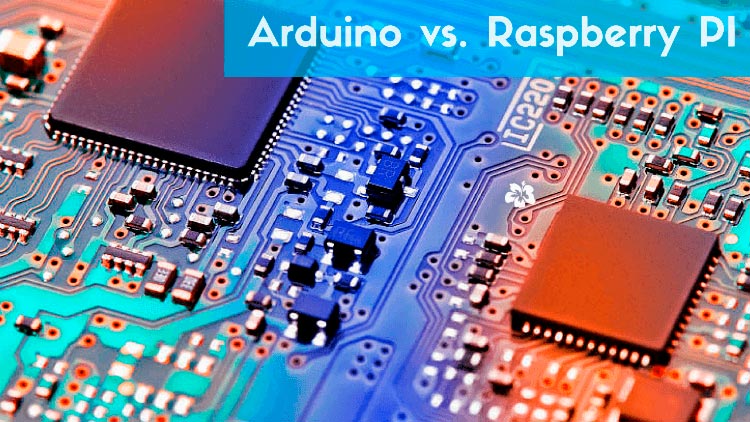What are do-it-yourself electronics? When asked that question the most common examples spoken about are Arduino and Raspberry PI. What is the real difference between the two? They actually are two very diverse components when classified by their features along with their purpose. While both systems were created in order to teach, they each took different paths in order to achieve that.
General
Arduino is as simple as a single-board microcontroller that isn’t particularly fast, but is meant for only one application. The designs simplicity makes it a no-hassle job for pure hardware projects. The microcontroller is designed as an open-source system and founder Massimo Banzi has been working to create other open-hardware/software systems at the Interaction Design Institute Ivrea. Raspberry PI, on the other hand, is actually a closed-source, completely functional computer. The almost credit card sized single-board was founded in the United Kingdom with the intent to teach basic computer sciences in schools of developing countries.
Differences
The memory size and clock speed of the two systems is the colossal difference between the two. Arduino Uno only has .002MB of memory compared to the overwhelming 512MB of the Raspberry PI Model B. Along with that, the Arduino Uno is also dwarfed in the clocking speed of each system, where it only weighs in with 16mhz of clock speed to the 700mhz clock speed in likes of the Raspberry PI Model B. The reason why there is such a substantial difference between the two is because of the fact that Raspberry Pi Model B operates as a computer itself. This gives the system the ability to multitask within its Linux Distributions operating system. The Arduino Uno doesn’t fall short in each aspect just because of its shortage of memory size and clock speed. It is not built with an operating system which makes it much simpler to start and get going than the PI. The simplicity of coding something to do one single task such as a talking clock all the way to a potty training detector for your little ones requires only a minimal amount of coding needed to perform it. As you can see, each system has their differences that appeal to different types of users. If you’re looking for a bit more complex system with the ability to handle more than one application without the complexity of a MAC or PC, then a Raspberry Pi Model B product seems to be right up your alley. If simplistic, quick, and easy to learn is what you are looking for in a simple installation, then look no further than the Arduino Uno.
Similarities
While both the Arduino Uno and Raspberry Pi Model B don’t share the same capabilities, their overall purposes do deem themselves comparable. Both systems were created for the use of teaching, and considering their small size it makes them simplistic enough to operate for even the newest programming users. Each system is no bigger than 9cmX6cmX7cm which in turn is about the size of a credit card not including the depth of each piece of hardware. Then comes the overall price of each, with the overwhelming amount of memory and clock speed of the PI, it would seem that it would be the higher priced board, but actually only comes in at $35. Arduino’s simplistic measures and open-source hardware/software range it in the very similar price of $30. When it comes to the aesthetics and price of each source, they both fall in the same realm.
Conclusion
The Arduino Uno and Raspberry PI Model B prove to have their vital differences that make them the products they are, but both compare in price to keep them competitive amongst each other. If you’re considering purchasing one keep in mind both their intentions talked about earlier, and have fun programming whatever comes to your free flowing mind!
